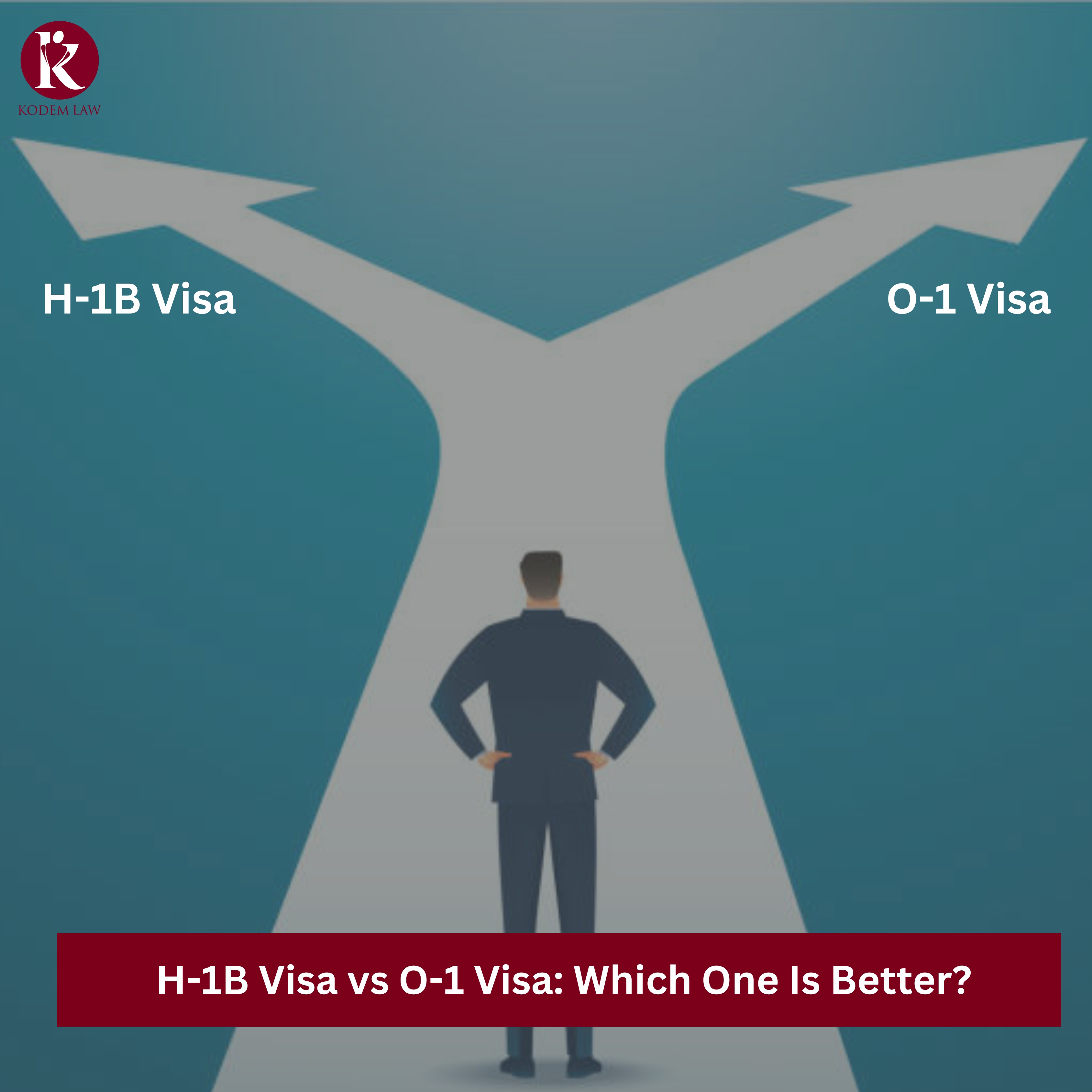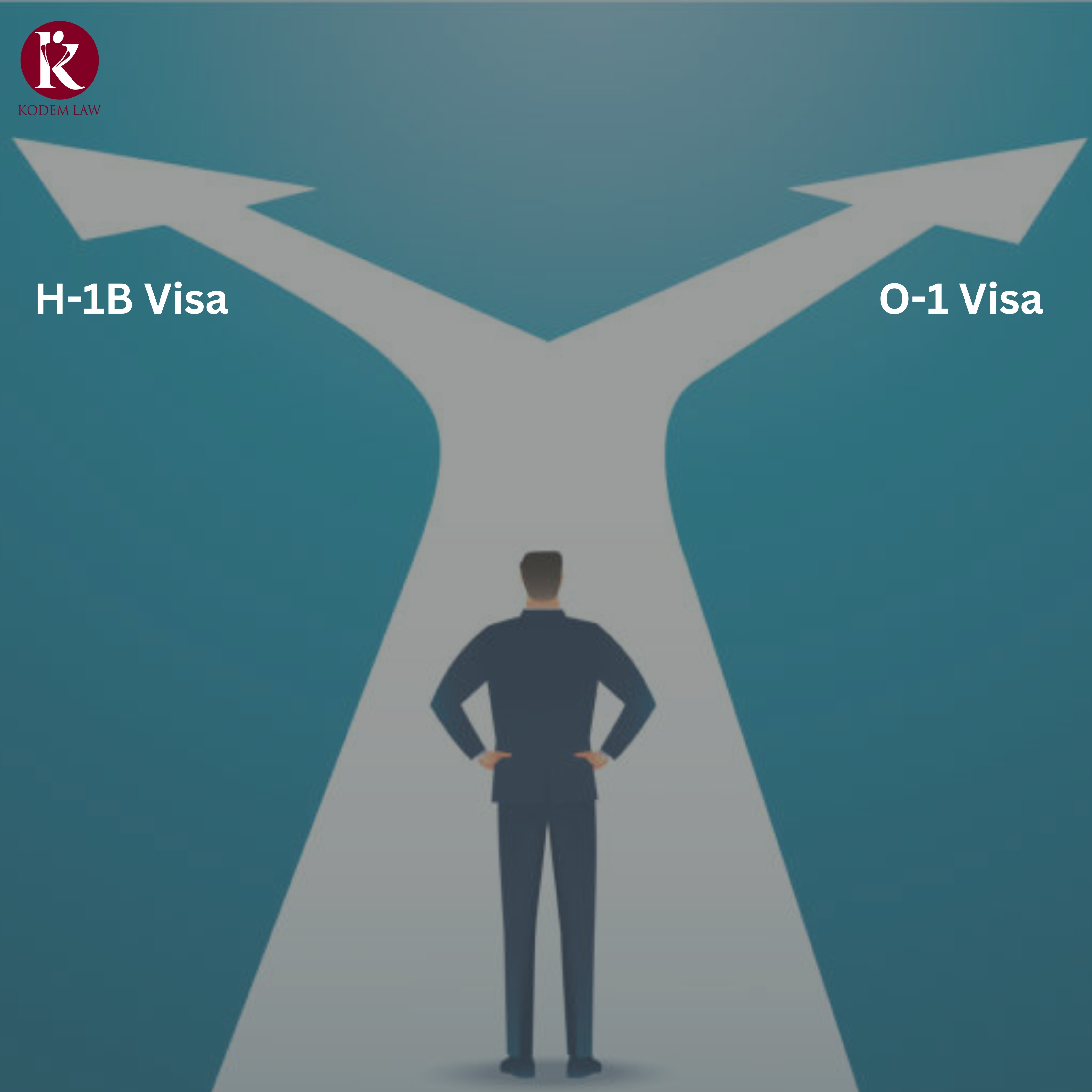
Deciding between the H-1B and O-1 visas is crucial for shaping your career in the United States. The H-1B and O-1 visas each offer distinct advantages, face specific challenges and have unique eligibility criteria. In this article, we’ll explore these differences in detail to help you decide which visa best suits your professional needs and aspirations.
What is the H-1B Visa?
The H-1B visa is a non-immigrant visa designed for U.S. companies to hire foreign workers for specialty occupations requiring specialized knowledge and skills. This visa is commonly pursued by professionals in industries such as information technology, engineering, medicine, and academia, where advanced theoretical or technical expertise is essential.
Eligibility Criteria
To qualify for an H-1B visa, you must:
- Hold a bachelor’s degree or higher in the specialty field.
- Have a job offer from a U.S. employer for a role that requires specialized knowledge.
- Ensure your employer can demonstrate that no qualified U.S. workers are available for the position.
Benefits of the H-1B Visa
The H-1B visa offers several advantages:
- Employment Authorization: Work legally in the U.S. for the sponsoring employer
- Path to Permanent Residency: Offers the opportunity to apply for a Green Card
- Dependents: Your spouse and children under 21 can join you and apply for H-4 visas
H-1B Visa: Limitations and Challenges
Despite its benefits, the H-1B visa has several limitations:
- Cap Issues: Limited to 85,000 visas per year, creating intense competition.
- Employer Dependency: Changing jobs can be complicated and requires a new visa application.
Understanding the O-1 Visa
The O-1 visa is tailored for individuals who possess extraordinary ability or achievement in their respective fields, including the arts, sciences, education, business, or athletics.
Eligibility Criteria for Extraordinary Ability
To be eligible for an O-1 visa, you must:
- Demonstrate extraordinary ability through sustained national or international acclaim.
- Provide evidence such as awards, published material, or critical roles in distinguished organizations.
Benefits of the O-1 Visa
The O-1 visa has its own set of benefits:
- No Cap: Unlike the H-1B, there is no annual limit on the number of O-1 visas issued.
- Job Flexibility: Greater ease in changing employers within the same field.
Limitations and Challenges
The O-1 visa also presents certain challenges:
- High Standards: Meeting the eligibility criteria requires substantial and well-documented evidence of extraordinary ability.
- Industry-Specific: Primarily suited for those with exceptional achievements in their fields.
Choosing Between H-1B Visa and O-1 Visa: Key Steps
When deciding between the H-1B and O-1 visas, it’s important to verify their unique benefits and limitations. Here’s a detailed comparison to help you choose the best option for your needs:
1. Eligibility Requirements:
- H-1B Visa: The H-1B visa has relatively straightforward requirements. It primarily requires a bachelor’s degree in a specialty occupation, making it a more attainable option for a broader range of professionals.
- O-1 Visa: The O-1 visa demands high standards, requiring proof of extraordinary ability through substantial evidence, such as awards and significant roles in distinguished organizations. This makes it a more challenging route and less accessible for many foreign nationals.
2. Visa Cap and Application Timing:
- H-1B Visa: There is an annual cap on H-1B visas—65,000 visas plus an additional 20,000 for those with U.S. master’s degrees or higher. The application process begins in April, and the visas often get filled quickly. Even if approved, you must wait until October for the visa to take effect.
- O-1 Visa: The O-1 visa does not have a cap or specific application period. U.S. employers can apply for O-1 visas year-round, and they become effective as soon as the petition is approved.
3. Duration of Stay and Extensions:
- H-1B Visa: Initially granted for up to three years. Maximum stay is six years (initial three years, extendable for another three) unless you have an approved green card petition, which can extend your stay further.
- O-1 Visa: The O-1 visa is initially granted for up to three years. Extensions are typically granted in one-year increments based on the continuation of the original event or activity.
4. Green Card Process:
- H-1B Visa: While the H-1B visa also allows for green card sponsorship, the process can be longer due to additional requirements like Labor Certification.
- O-1 Visa: The O-1 visa can be a strong pathway to permanent residency. Due to its alignment with the EB-1 immigrant visa requirements, O-1 visa holders often find a smoother transition to an EB-1 green card after spending some years in the U.S.
Note: While H-4 visa holders can benefit from employment opportunities through an EAD while waiting for a green card, O-3 visa holders face limitations and must explore alternative paths for work or personal growth. Understanding the options available helps in making informed decisions about career and life in the U.S.

Employment Authorization for Spouses of H-1B and O-1 Visa Holders
H-1B Visa Spouses (H-4 Visa Holders):
1. Eligibility:
- Can apply for an Employment Authorization Document (EAD)
- H-1B visa holder should have a approved Form I-140 petition
- H-1B visa holder must be in H-1B extension beyond six years due to green card processing
2. Application Process:
- File Form I-765, Application for Employment Authorization
- Submit proof of H-4 status, I-140 approval, or H-1B extension
- Pay the required filing fee
3. Benefits:
- Allows work for any U.S. employer
- Enables self-employment or starting a business
- Provides financial independence and career flexibility
O-1 Visa Spouses (O-3 Visa Holders):
1. No EAD Eligibility:
- O-3 visa holders are not eligible for an Employment Authorization Document (EAD)
- Not permitted to work in the U.S. under this visa status
2. Alternative Options:
- Consider changing visa status to one that allows work, like an H-1B, if eligible
- Explore education or volunteer opportunities while on O-3 status, though these do not provide income
Which Visa Is Right for You?
- Assessing Your Qualifications: Evaluate whether you meet the high standards of the O-1 visa or the educational requirements of the H-1B.
- Career Goals and Needs: Consider your long-term career goals, industry demands, and the type of work you wish to pursue in the U.S.
- Consulting with an Immigration Attorney: An immigration attorney can provide personalized advice based on your unique situation and help you navigate the complexities of the visa application process.
Conclusion
Choosing between the H-1B and O-1 visas involves a careful evaluation of your qualifications and career goals. The H-1B visa is well-suited for specialized professionals with a bachelor’s degree, offering a clear path to permanent residency despite annual caps. In contrast, the O-1 visa is tailored for individuals with extraordinary abilities, providing greater flexibility and no cap, but it requires meeting stringent eligibility criteria. The best choice depends on your achievements, career aspirations, and opportunities in the U.S. Consulting with an experienced immigration attorney can help you navigate the complexities of both options and make an informed decision aligned with your professional objectives.

